The Samsung Galaxy Tab S2 Review
by Brandon Chester on October 15, 2015 8:00 AM ESTSystem Performance: GPU
While CPU performance characterizes one part of an SoC, GPU performance characterizes another. Tablets have long been a form factor where GPU performance can be pushed much further than in a phone due to the larger chassis of a tablet having far fewer size and thermal limitations. While some tablets elect to use specialized SoCs with more powerful GPU hardware than smartphones, the Tab S2 uses the same ARM Mali T760 GPU used in the Galaxy Note 4 Exynos.
To characterize the Tab S2's GPU performance I've run it through our standard GPU benchmarks. First up is 3DMark which actually has both a CPU and GPU component, followed by BaseMark X and GFXBench which focus more strongly on the GPU alone.
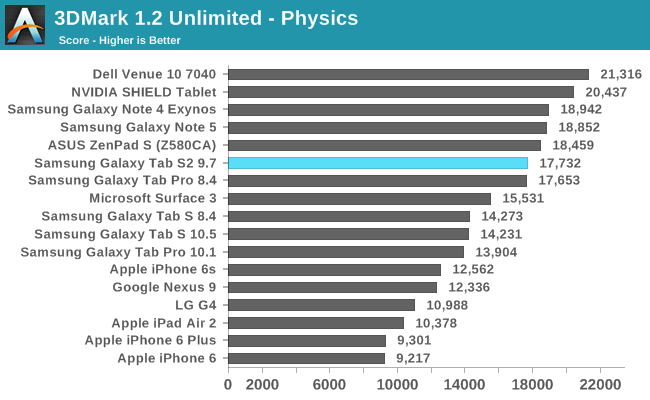


In 3DMark all of the Tab S2's scores are roughly equivalent to the Galaxy Note 4 Exynos which is not unexpected. Unfortunately, it's clear that Mali T760 can't keep up with NVIDIA's mobile Kepler implementation or Apple's custom 8 core PowerVR 6XT part. While the Nexus 9 and iPad Air 2 both fall short in the physics sub test their scores in the graphics sub test are in a completely different league than the Tab S2.
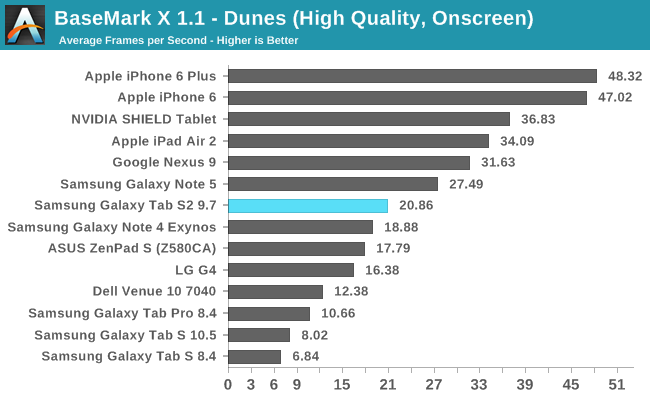
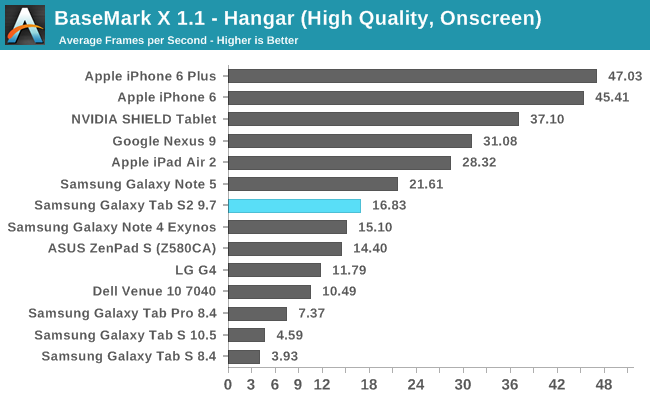
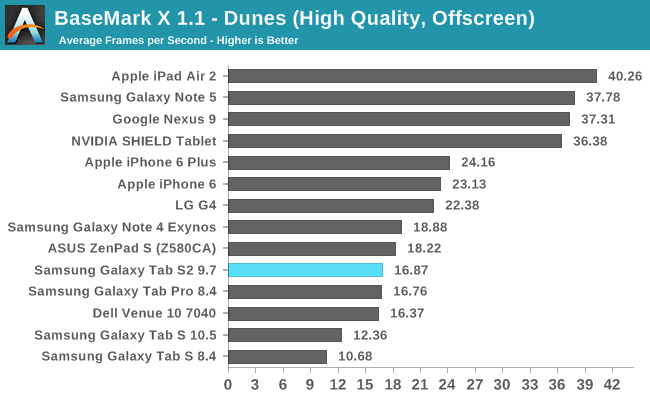
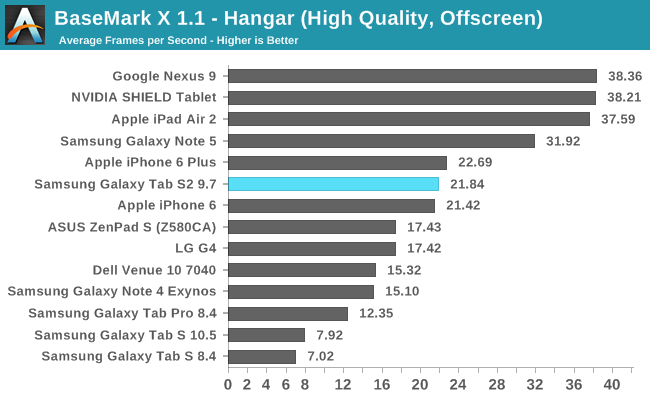
In BaseMark X we again see the Tab S2 sitting fairly far behind the iPad Air 2 and Nexus 9. If I was considering the Tab S2 8.0 which retails for $399 these results would be perfectly fine, as the major competition at that price point is the iPad Mini 4 which has Apple A8 SoC. At $499 the GPU performance simply isn't competitive, and it outlines the issues with trying to make one SoC fit many different devices.
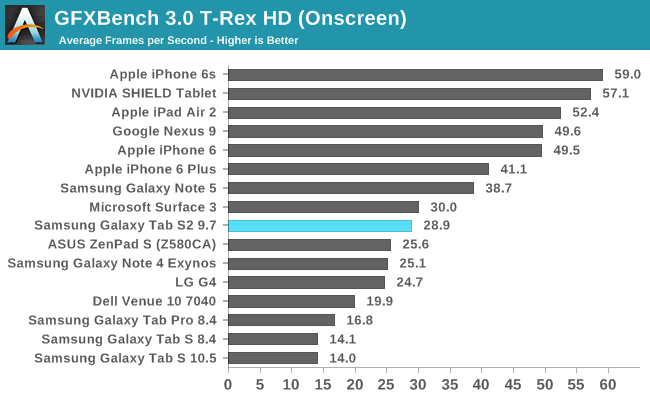
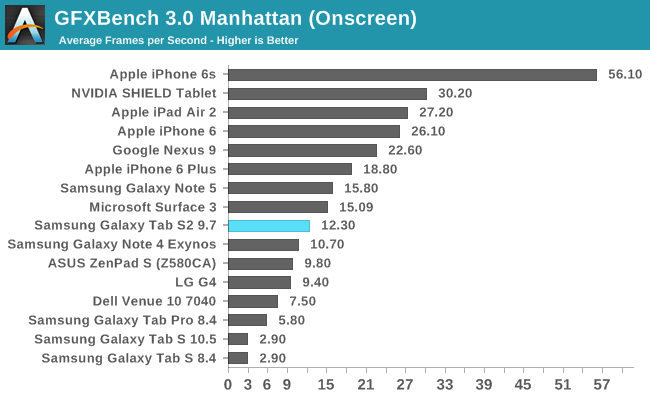
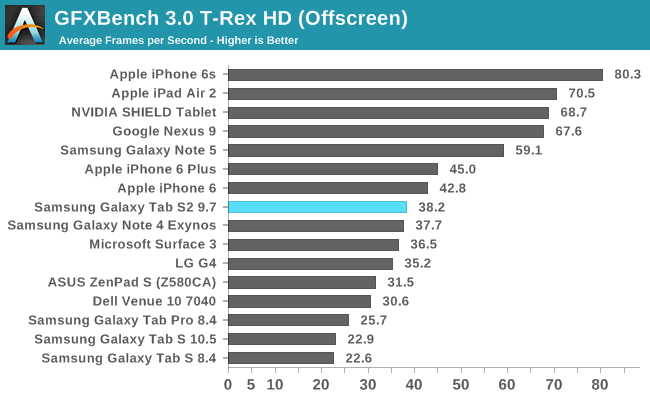
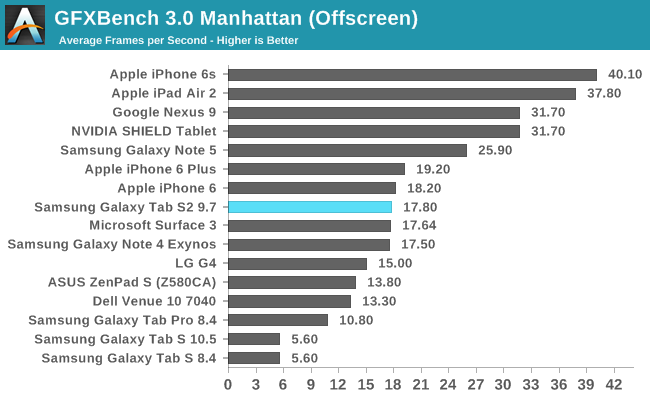
In GFXBench the Tab S2 is in the same situation as the previous tests. GPU performance is right around where the Galaxy Note 4 and iPhone 6 are, and it's just not good enough to justify the $499 price tag of the Tab S2.
Like I said on the last page, the fact that most Android tablet OEMs aren't providing CPU and GPU performance that is anywhere near competitive with the iPad Air 2 is a very bad thing for the entire tablet industry. Apple decided to not even update the iPad Air 2 despite it being a year old, and it's hard to blame them when nobody is close to them as far as performance is concerned. Having various manufacturers pushing each other to constantly improve is one of the primary drivers behind the advancements made in the mobile space, and I'm concerned that this no longer exists in the tablet market as the only tablets that come close are ones with NVIDIA's SoCs which also happen to be tablets that don't ship in very great volume.
System Performance: NAND
While it's still not advertised in specifications like on laptops, a mobile device's internal storage is now being recognized as a highly relevant part of overall system performance. Internal eMMC NAND solutions have traditionally had very poor storage performance, and different vendors have done different things to address the problem.
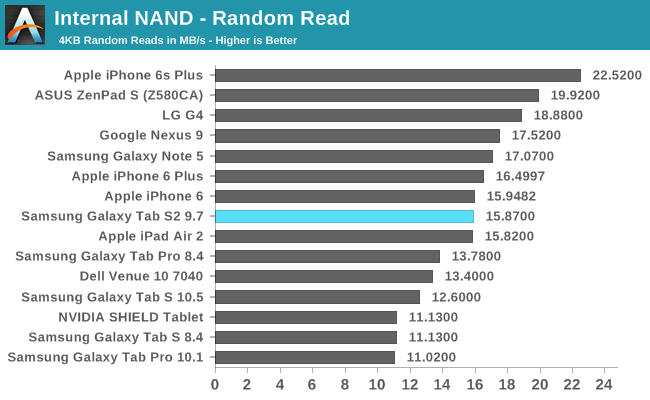
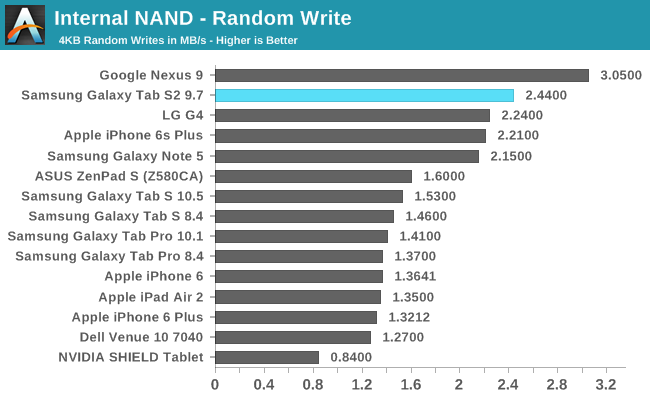
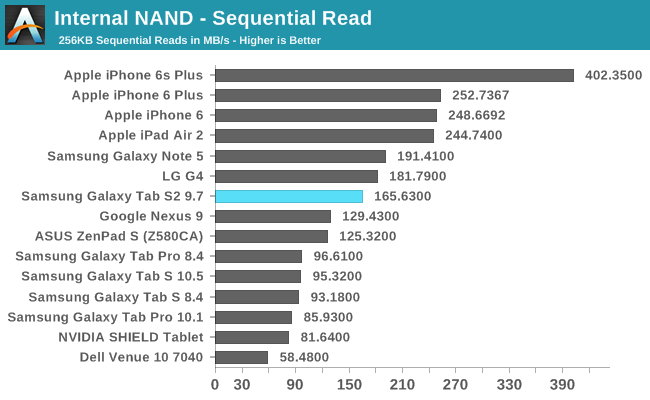
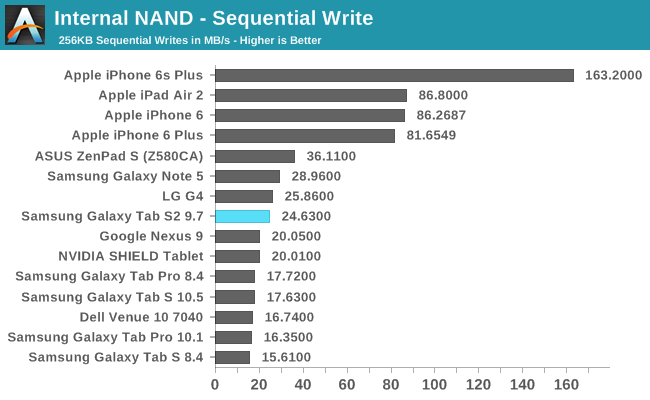
Both sets of read and write results are right around what you'd expect. Random writes in particular are very fast, and all the other results are fairly similar to those of the Galaxy Note 5. I don't expect internal NAND speeds will be a bottleneck on the Galaxy Tab S2, which is expected and fitting of a flagship tablet.










162 Comments
View All Comments
nerd1 - Thursday, October 15, 2015 - link
App store vs millions of windows 'application' most of which users do not have to buy crappier mobile version again?osxandwindows - Thursday, October 15, 2015 - link
@nerd1Are there touch screen apps on windows tho?
osxandwindows - Thursday, October 15, 2015 - link
Why should I buy a surface pro if not for productivity then?KoolAidMan1 - Saturday, October 17, 2015 - link
Problem is that those desktop apps aren't optimized for touch interface. I'm running Windows 10 on my desktop and love it but I'm not ready to start using it on touchscreens yet.I'm eyeballing a Surface 4 Pro but can't justify it over a regular laptop right now.
osxandwindows - Sunday, October 18, 2015 - link
ExactlyThats why I am going to get an iPad pro.
hughlle - Tuesday, October 20, 2015 - link
No, you are right. There aren't really many apps. Why I just use full applications, which work just fine for me and touch. OneNote (because of the desktop inking issues) is the only app I use on the surface. Everything else I can do quite happily with the desktop software with finger and pen.osxandwindows - Thursday, October 15, 2015 - link
@zepiUtilityMax - Sunday, October 25, 2015 - link
Web browsing can be a HUGE hit. By far, the most processor intensive tasks on my Tab S 10. Web browser is where I normally see laggy performance, slowdowns, poor battery life, etc.Aenean144 - Thursday, October 15, 2015 - link
1. Apple designs and owns their processors. They contract Samsung to fabricate them or TSMC to fabricate them or both at the same time as is happening for iPhones per Apple's, for lack of a better word, drawings. Samsung can't use these processors. It's quite doubtful that they can even produce them independent of Apple knowing about it. If they do, the consequences will be quite severe, like Samsung not being able to sell any of those products virtually everywhere, except for maybe S Korea. And that's only if the S Korean gov't really really wants to take one for the team. And they won't.2. There are fairly competitive SoCs out there to the A8X or A8 in iPads today. So there are options, like Samsung's own Exyonos 7 series SoC. But, it looks like they really wanted it to be 5.6 mm thick. That has consequences and they gave up on have a largish battery and a more performant SoC to get 5.6 mm thick.
Don't think about half the performance, 0.15 lb less weight, 0.5 mm less thick, and maybe a third less runtime than the iPad Air 2 is worth it at those prices.
thedons1983 - Saturday, October 17, 2015 - link
Benchmarks are pretty much useless, when it comes to comparing everyday performance... You moronic pleb!!